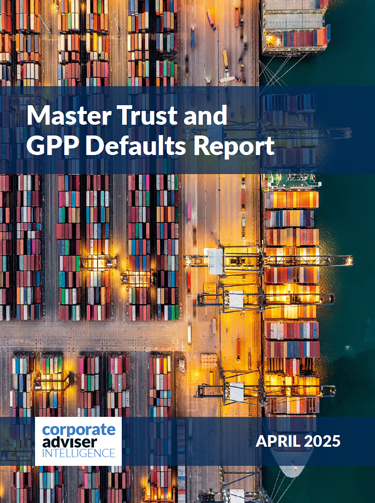The cost of auto-enrolment is undoubtedly an ever-growing dot on finance directors’ radars at a time when the Budget proposals have dented confidence in pensions. Throw in the poor recent performance of many funds and it is not hard to see why a lot of key decision-makers are becoming increasingly disengaged.
Personal accounts offer a ready-made get-out clause. The issue for the industry is how many companies choose to level down or give up the ghost completely and what advisers and providers can do to minimise this.
There is broad consensus that many firms will maintain the status quo, particularly employers in professional services. On the flipside many, including smaller businesses, companies that do not currently offer pensions and those in sectors with large, low paid workforces with high turnover, will opt for the Government-backed scheme.
There will also, however, undoubtedly be a sizeable middle ground and this is where the key battle will be fought. Improving the brand image of pensions may sound like one of Alan Sugar’s more dastardly challenges on The Apprentice, but Standard Life’s head of pensions policy John Lawson believes that advisers and providers alike have a strong case, much of which centres on Personal Accounts’ low-rent nature.
“Personal accounts are a big threat, but they are going to be online only and a lot of people won’t like that. Because our average contribution is a lot higher we can offer telephone helplines and much better service, which is one big advantage,” he says. “Secondly, with advisers we make it much easier for employers. Joining personal accounts is not straightforward. Employers have to register with The Pensions Regulator and face the complications of choosing basic, band or gross earnings for contribution purposes and there will be a lot of manual record keeping. We can package that, and advisers can guide them through the challenges of auto-enrolment.”
Similarly, the low cost approach to investment could actually limit its appeal. The Personal Accounts Delivery Authority launched its consultation into default fund options last month. Although it will arguably be one of the best researched products of its type and likely to become a bellwether for the defined contribution universe, concerns have been raised about the apparent one-size-fits-all approach.
“Worryingly, there does not seem to be any attempt to identify individual’s attitudes to risk,” says Alasdair Buchanan, group head of communications at Scottish Life. “The key area ripe for differentiation is default options and giving choice around that.”
Traditional balanced managed funds may still be the most common vehicle used as a default but the industry has made strides forward in recent years. Although more bespoke funds may be still be largely the preserve of large or cash-rich companies, many providers have been bringing more sophisticated products to market.
Martin Ralph, pension & retirement benefits director at Willis Employee Benefits, says: “Insurers have been slow to innovate, in part because they are wary of putting people off by making things too complicated. We are now seeing providers working with investment consultants and moving away from traditional balanced managed funds with lifestyling and look instead at absolute return and diversified growth funds.”
Life companies are also increasingly looking at building guarantees into products and effectively engaging in an element of risk-sharing that DC has moved away from, Lawson says. Clearly this is not an area Pada can compete in. It does, however, also come at a cost and is not going to appeal to the natural targets of personal accounts.
This level of product development is likely to gather momentum in the run up to 2012. When the exact shape of the personal accounts default fund is known, few would bet against a number of providers aping the arrangement, perhaps with slightly lower charges, and the service extras on the side.
“If personal accounts are looking at a 0.5 per cent annual charge, we can write stakeholder business at or below that and compare favourably on costs,” says Paul Marks, technical consultant at Gissings.
On top of that come the non-core benefits and areas around member communication, which he says will be a major selling point for sticking with the industry.
A case in point is salary sacrifice, which despite losing its lustre for those earning over £150,000 in the Budget, remains highly valued by many companies and the vast majority of their workforces.
James Biggs, associate director at Jelf Group, says: “All of our clients are interested in their rewards packages and there is a lot of appetite for ways of funding that work more smartly, such as salary sacrifice, cycle to work and childcare vouchers.”
He says total reward statements are also increasingly being seen as a key means of ensuring that employers’ benefits packages are valued by staff.
Similarly, Marks points to the amount of investment that has been poured into both provider and adviser extranets to improve both engagement and member experience.
The National Association of Pension Funds is also turning its hand to the brand makeover of private sector pensions. Its kitemark scheme for good pensions comes into play later this year in an attempt to play on the value that some firms put in being seen as an employer of choice.
This argument appears to be holding out well for now with companies, many of which have had to make tough decisions on headcount of late. To then take a scythe to the remaining employee benefits would hardly boost morale although in some cases is likely to be an economic necessity.
Biggs says that in the past week he has met with clients with 130, 900, and 2,000 members and has found no appetite for levelling down. Marks reports similar findings but both accept that a few companies are likely to change tack nearer the event. The flipside is that a number of companies with high paid staff that do not provide pension benefits currently, not uncommon in hedge fundland, for example, will come into play in 2012.
The looming onset of personal accounts has given the industry a proverbial kick up the backside. It has forced it to focus on what is good and improve what is bad, which is in many ways no bad thing for its long-term health.
The personal accounts default fund
The exact shape of the personal accounts default fund is still unknown but the Personal Accounts Delivery Authority has dropped some pretty big hints about its likely make-up.
Pada launched its investment discussion paper, ‘Building personal accounts: designing an investment approach’, on May 7 with the consultation period set to run for three months and the body publishing its final response three months later.
The paper does seek to cover all bases, but the issue of cost constraints is a recurrent theme and will inevitably influence its end decisions heavily.
It weighs up the pro’s and con’s of active and passive funds, saying that there is little evidence of active managers consistently outperforming and adds that “passive management is less expensive making it particularly attractive for the default fund of the personal accounts scheme.”
Even more problematic is its recognition that alternative investments, which it deems as hedge funds, property, private equity and commodities, offer attractive diversification benefits but come with high fund management charges.
In terms of when members near retirement, Pada describes traditional lifestyling as a “blunt tool” and appears to be leaning towards target date funds where the derisking is carried out at the fund rather than the individual level.
Whether a range of default funds with different risk profiles will be offered is also up in the air with Pada accepting that the need to weigh up choice with the risk of confusing people is a fine art.
John Lawson, head of pensions policy at Standard Life, says: “When you take Pada’s statements together, the obvious conclusion is that it will go for target date funds for different age bands with passive management. It’s hard to see how it will use alternatives because if it is looking at an annual management charge of around 0.5 per cent, that will be blown out of the water even without admin and marketing costs.”
Will the NAPF’s kitemark fly
The National Association of Pension Funds is due to start awarding its first kitemarks for defined contribution arrangements later this year.
Applications for the ‘Pension Quality Mark’ logo and the right to use the purple tick on scheme literature and job advertisements opened a couple of months ago.
The pension arrangements must have contributions of 10 per cent with at least 6 per cent paid by the employer although if it is over 15 per cent with 10 per cent from the employer it can go for the Pension Quality Mark Plus.
There are also a range of governance requirements and the need for clear and simple member communications, which will be judged by an independent board of “key stakeholders”, including employer and member representatives, pension providers and “relevant experts”.
Few would disagree that shining a light on the good schemes is no bad thing but views differ on the likely impact the initiative will have on the market.
John Jory, deputy chief executive of B&CE, says: “The concept is good but I am not sure what it will achieve. For example, if your employer is contributing 7 per cent would knowing another company pays 10 per cent really encourage people to switch jobs?”
Martin Ralph, pension & retirement benefits director at Willis Employee Benefits, is more upbeat about its potential.
He says: “The kitemark will make a difference and it is a selling point both for the employer and us as consultants. It is a differentiator of the level of service you can provide if you can offer that to clients.”
A balanced view
Traditional balanced managed funds may still dominate the default fund landscape, but a number of insurers have launched more sophisticated products into the marketplace.
Both Scottish Life and Scottish Widows have built fund ranges that aim to provide the benefits of a trustee-based scheme, but within a contract-based arrangement.
The offerings provide ongoing monitoring of investment manager performance and have the flexibility to tweak asset allocation if needed, including delaying the shift into lifestyling programmes if the market environment is highly unfavourable. They also offer quarterly rebalancing to ensure that the funds’ risk profile does not drift.
Malcolm McLean, chief executive of The Pensions Advisory Service, has publicly criticised traditional balanced managed funds where the equity content has been allowed to drift up to 80 per cent, with obvious consequences during the downturn.
Alasdair Buchanan, group head of communications at Scottish Life, says: “One result of the move away from trust-based schemes has been that nobody is taking clear responsibility for these things and they are just set up and left to run. Our Governed range ensures the funds are monitored over time, and tweaked so that they continue to deliver.”
Scottish Life also got the thumbs-up from independent actuaries AKG last month. Also winning plaudits is Standard Life for its Global Absolute Return Strategies fund, which has taken in over £1bn.
This multi-asset fund typically runs 28 or so individual investment strategies as diverse as equity long/short, bond long/short, currency and relative value trades. Performance has been strong throughout the downturn, and it is now being widely touted as a serious contender for advisers choosing a default fund.




